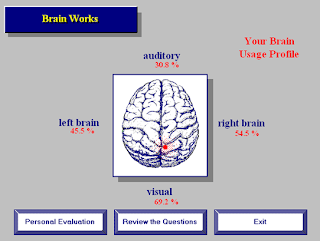Today lecture was about library services. For that our two librarians Ms Yamini and Ms. Wathsala came as the visiting lecturers. Ms Yamini was the one who conducted the the lecture. She started the lecture explaining the services available in library. Then she talked about the e-library system. In online library we can reserve books, renew books. In e-library and can view articles that has linked to other libraries in banks, universities, companies etc. She also talked about the resources available in library such as books, journals, paper articles, thesis done by earlier student in APIIT etc.
 |
| Figure 1: Library (Blogspot, 2012) |
Then she informed us if we find any difficult to find any articles regrading to our course modules let them know by writing,e-mailing or and by meeting them.
After that she asked whether we have activated the ATHENS accounts. There were very few of us who have activated athens accounts and asked to activated accounts those who have not done yet. After that she concluded the lecture and we all thanked her for giving us knowledge of library services that available to us.
After that Mr Eranjan started the lecture as a continuation of the Ms Yamini's lecture. He asked us to use the library as much as we can because it can be very useful for our final year project (FYP) as well since we have to do a research for the FYP. Since most of them did not have ATHENS account he wanted us to teach how to use it. For that he asked a person who has ATHENS account to come and login many people tried to login including myslef since we forgot our passwords we unable to login and finally Deve was able to login and Mr Eranjan taught us how to use the it. He showed some important links to visit where we can find good articles, books and journals. The good resources that mentioned was ebray, EBSCO, Emerald etc.
At the end of the lecture Mr Eranjan gave us a homework to find out steps in conducting an effective research.
Steps in Conducting an Effective Research
- Determine your research topic/questions
- Understand difference between primary and secondary research
- Determine your scope and timeline
- Write a research question
- Learn how to find useful sources
- Collect some possible sources
- Begin reading in detail
- Find a method to take notes on what you read
- Continue to consider new sources
- Evaluate the sources you used
- Keep your research question in your mind
- Write your tentative thesis
- Begin write your first draft
- Begin to add quotes, paraphrases, summaries into your writing
- Continue writing your first draft, and then revise it
- Prepare the final draft
Learning Outcomes:-
Information is very useful for whatever the activity we do. We need resources to find information. Library is a place which has all the various resources that helps to find information. A library has book, magazines, journals, annual reports etc. and developed new technology gave birth to online library/e-library. From this our work makes much easier because we can access the library when we are at home also. Also the other main benefit is e-libraries can connect to other e-libraries from this we able to find rich information as well as lots of various types information regarding on particular topic.The best example is APIIT online library it has linked to some banks in Sri Lanka like central bank, peoples bank etc also to IEEE computer society, Emerald etc.
I am happy to say as a APIIT student I am lucky to access online library like ATHENS which has good resources with rich information. By reading books, magazines etc. I can improve my knowledge about different subjects and it helps me to do my projects as well.
From today's lecture I was more aware about the APIIT library services and resources and I think today lecture will very helpful to do my current project as well to do my final project as well.
References:-
Blogspot. (2012). Library. [Online] available at:
https://blogger.googleusercontent.com/img/b/R29vZ2xl/AVvXsEgTCDGEMLkUgdkC3tqNk9c4KVOMOAFkdxzruw7zwlnQEf57L_vHDY1uH-QbMfo6ifw-rGyBMyQNNcRhjI83G_QdglsJzcsAKdMlYItrupUJDO0WSCXrTkA4n-ZBUatwktEPGvz3egdQtbuj/s1600/081028_library_books.jpg [Accessed 31st July 2012]
Wikihow. (2012). steps in conducting an effective research. [Online] available at:
http://www.wikihow.com/Conduct-Academic-Research [Accessed 31st July 2012]
Wikihow. (2012). steps in conducting an effective research. [Online] available at:
http://www.wikihow.com/Conduct-Academic-Research [Accessed 31st July 2012]













